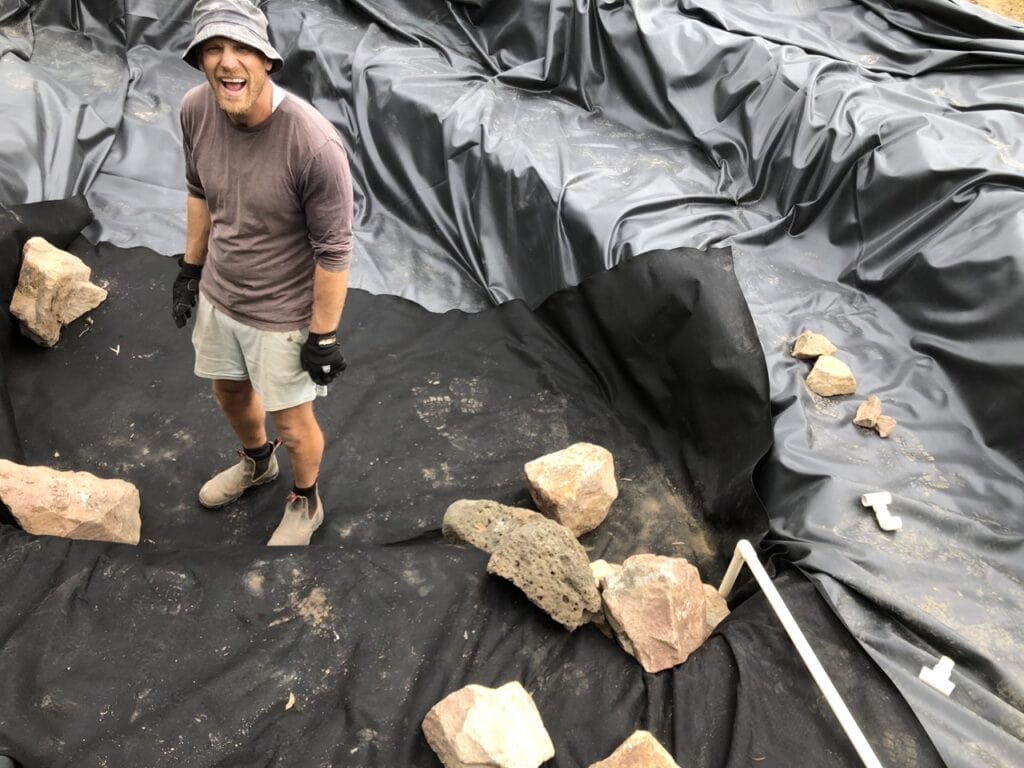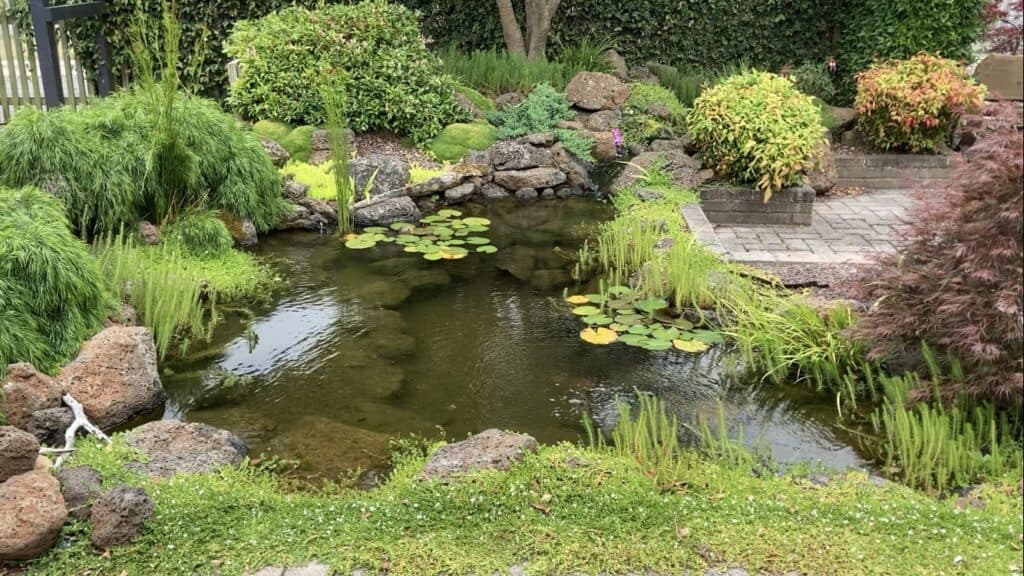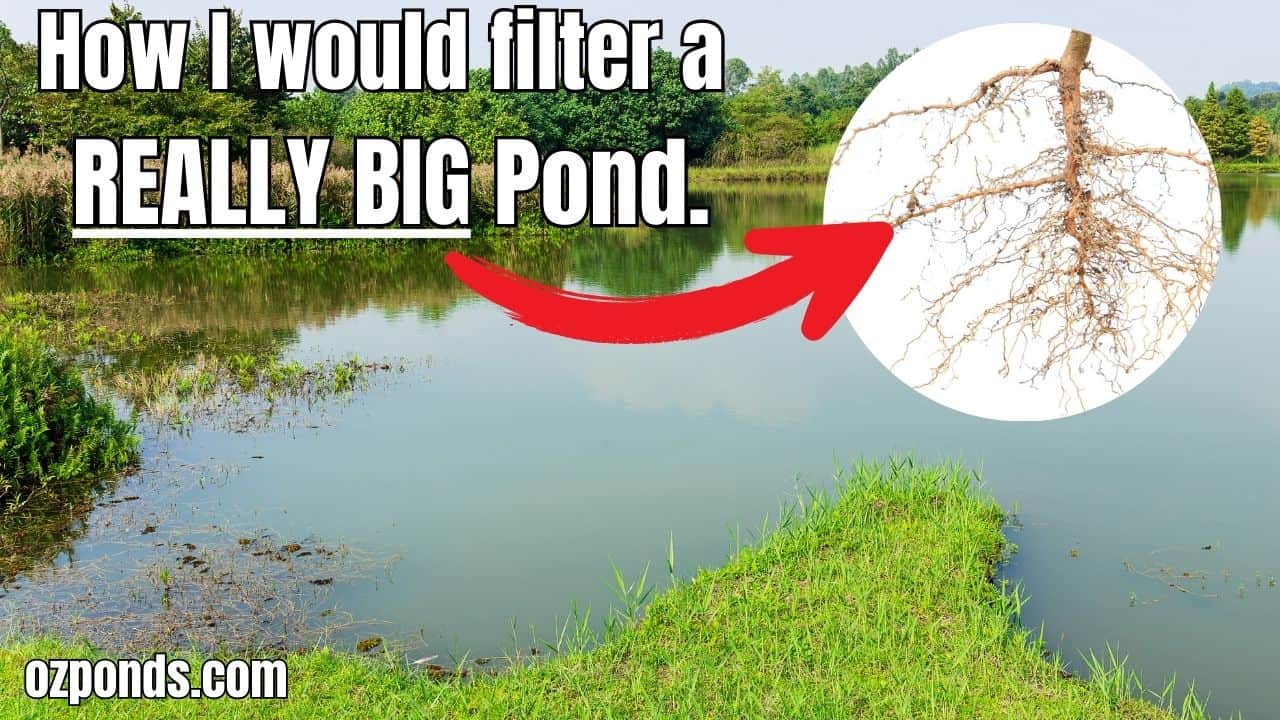When it comes to maintaining water clarity and quality in ponds, one of the most effective methods is using a bog filter. I’ve found that with the right setup, a bog filter can ensure clean, clear, and healthy water every time.
But what if the pond is massive—like a large, unlined mini-lake or a 5-acre pond?
That’s a question I get asked a lot. While technically you could implement a bog filter in such a setting, it would be expensive and likely not the most practical solution.
So, what are the best options for filtering a large pond or dam? In this post, I’ll explore the types of filtration methods I recommend to improve water clarity and quality without the need for an oversized bog filter.
If you prefer video content here’s a video I made on the topic:
Why Bog Filters Work for Smaller Ponds
Before we dive into large-scale solutions, let’s quickly recap why bog filters are so effective for smaller ponds. The principle is simple: plants and bacteria work together to filter water naturally, just like they have for millions of years.
The main culprits behind poor water quality in ponds are usually excess nutrients, particularly phosphates and nitrogen. Bog filters use rock and pebbles to create surface areas for bacteria to colonize, while plants help absorb and process these nutrients, keeping the water clear.
In a backyard pond, you can easily maintain water quality by correctly sizing the bog filter. Water is pumped into the base of the filter, forcing it through the pebbles and plant roots before returning to the pond, delivering crystal-clear water with minimal effort.

Blueprint I use to build my ponds
- All the numbers I use to design my ponds, delivered straight to your inbox
- These formulas have helped people all over the world build beautiful, low maintenance ponds, without spending a fortune.
- Access to a private community of like minded people and a chat bot that loves answering pond related questions.
Filtering Large Ponds and Dams: The Challenges
For larger bodies of water, like ponds or dams spanning acres, creating a bog filter of similar proportions would require massive pumps, an extensive bog or wetland area, and a hefty investment.
Fortunately, there are some more cost-effective alternatives to achieve the same results by increasing the surface area for bacteria and adding more plants.
Step 1: Add More Plants, Especially Marginal Plants
The most effective plants for filtering large ponds are riparian or marginal plants. These plants thrive in shallow water, with their roots submerged and foliage above the surface, allowing them to pull nutrients directly from the water.
Increasing the diversity of your plants is key here—you don’t want to rely on just one or two species. Different plants will be active at various times of the year, providing year-round filtration.
Here’s an article I wrote on 40 awesome pond plants to give you some ideas.
Step 2: Address Excess Nutrients
If adding plants isn’t enough to solve your water quality issues, the next step is to tackle the nutrient sources.
Excess nutrients in large ponds can come from multiple sources, including too many fish or animals in the pond, or fertilizer-rich runoff entering the water.
Slowing down the flow of water entering the pond can help filter out sediments and purify the water before it reaches the pond.
One solution is to create natural barriers—areas where water can slow down and filter through the soil and plants before reaching the pond. This helps remove some sediments and prefilter the water, improving its quality.


Step 3: Increase Filtration with Floating Islands or Wetlands
Another great option is to build floating islands or wetlands.
These structures can float on the surface of the pond and support the growth of marginal plants, which filter the water naturally.
As the islands drift around the pond, depending on the wind, the plants’ root systems dangle into the water, increasing the surface area for beneficial bacteria to colonize.

You could even use solar-powered pumps to dump water onto the floating wetlands, further boosting filtration.
Step 4: Consider Aeration for Healthier Water
Finally, don’t forget about aeration. Well-oxygenated water allows bacteria to work more efficiently, breaking down organic material and helping keep the water clear.
I’ve covered aeration in several videos on my YouTube channel, so be sure to check them out for more details.
The temperature of the water will also impact on the amount of oxygen the water can hold. Here’s a video on pond temperature.
Conclusion
Filtering large ponds doesn’t have to be expensive or complicated. Adding more marginal plants, addressing nutrient sources, and considering floating islands and aeration, you can achieve healthy water without the need for a massive bog filter.
Every pond is different, so don’t be afraid to experiment with multiple filtration methods until you find what works best for your situation.
I hope this article was helpful and gives you some ideas for your pond. Thanks for reading.

Join my free email list
If you would like to join my free email list click the button below.
I promise I won’t spam you, I’ll only send information I think can help you save money building and maintaining a pond.

